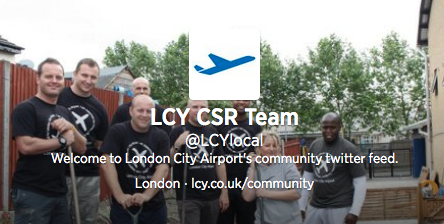How are social media, online engagement and other initiatives helping airports communicate with local communities?
Over the years, Los Angeles International Airport (LAX) has given its social media platforms more prominence. Presently, it is a key and valuable communication channel for local stakeholders and the community.
Its public relations specialist, Katherine Alvarado, explains: “Social media is one of several avenues of communication LAX utilises to reach and connect with the community, travelling public, stakeholders and the world.
“We use its social media platforms actively to communicate news and information of interest including traffic conditions, LAX traveller services, community events, airport conditions, emergency updates and more.”
It is increasingly clear in 2014 that the meteoric rise of today’s ‘connected traveller’ and the ever-increasing closeness between people and brands is here to stay.
Ready availability of the Internet, a surfeit of smart mobile devices and popularity of social networks has created a new communication paradigm – the age of one-way advertising is dead. Markets are conversations once more.
This presents both an opportunity and responsibility on airports for closer, more meaningful interactions that create deep linkages with their online communities and beyond by using the potential of online communication channels to reach out to their neighbouring communities in more ways.
So how are airports currently serving local communities – using both traditional and social means – and, what are some ways to magnify these efforts using social channels and online engagement?
The necessity of community engagement
Airports aim to create opportunities for local residents to enjoy their local airport to make the most of the economic benefits such as training programmes and the creation of jobs for local people.
Although airport operations can sometimes be intrusive for people living and operating in the local area, they generate significant social benefits and are a catalyst for economic growth.
However, airports are also aware of the adverse effects that operations can have on some of their closest neighbours, so balancing the interests of all stakeholders including local, regional, national, aviation industry and wider interest groups, is vital to support the sustainable growth of any airport.
Community relations programmes include a wide range of initiatives that encompass all three elements of sustainability – environment, social and economic.
They also provide support in the form of charitable donations, staff volunteering, sharing of professional skills and expertise, or the use of equipment and premises. Quite clearly there is a need for communication, consultation and charitable support.
“Our business is not only about airports, it’s about giving back to our communities. So, as an airport operator, contributing toward the development and sustainability of our communities is very important, and education is the foundation for the development of any community,” says Deidre Davids, communications manager at Cape Town International Airport.
Leading lights in airport community relations
Cape Town International Airport has an annual Corporate Social Investment budget which focuses on development of youth, enterprise and community, as well as mobility and education.
In the current fiscal year ending March 2014, the airport has spent €170,000 supporting various community projects within Cape Town. The key flagship projects for the airport are TRAC Western Cape (Technology Research Activity Centre) that focuses on improving disadvantaged schools’ maths and science marks for learners in Grade 11 and 12.
Other projects include Heart Capital, a social enterprise accelerator that helps the youth become entrepreneurs, and Learn to Earn, an organisation that teaches unemployed youth skills to help them get jobs or set up their own business.
“The uplifting of the airport’s immediate surrounding communities is important to us. In achieving this we have to ensure that whatever support we give leads to self-reliant and sustainable projects that benefits people living in these communities,” says Davids.
Given how focused the gateway is on education, it would be interesting to see whether it can take advantage of the myriad of tools the Internet provides to aid its educational efforts.
The Internet has seen the rise of many great educational start-ups. An online educational social network might be the next step in this direction for the airport.
Elsewhere, the LAX Community Relations Division spearheads ongoing community outreach programmes designed to optimise effective two-way communications with various publics.
A key focus of the division is establishing programmes and services that address the needs and concerns of surrounding airport communities. Interesting initiatives include aviation education, a speakers bureau, and community and civic participation.
They also liaise with community-based organisations and oversee public agency-private industry partnerships.
Recognising the necessity of social communications, LAX also uses its social media platforms actively to communicate different information of interest. When more pressing news does not supersede, the organisation uses a social media editorial calendar to manage ongoing campaigns.
Twitter is the go-to platform for real-time updates, with Facebook being second. Other platforms are utilised when the content is more of a visual and entertaining aspect.
In the UK, London City Airport’s unique positioning on the doorstep of the local community is the driving force behind its CSR programme.
The airport engages with children and young people in primary and secondary schools, offering literacy programmes, and careers advice. The London City Airport (LCY) Take Off Into Work scheme, now in its fifth year, provides skills training and work experience for local adults looking for employment.
Since 1997, airport staff have raised more than €900,000 for the hospice. They have also devoted a total of 3,200 hours since 2010 to help local charities and organisations.
LCY is also mindful of the residential and business premises located nearby, and has programmes in place to reflect its commitment to these residents.
Air quality impact is central to the airport’s environmental strategies. Regular tests deliver levels well within EU limits. It also has in place schemes to encourage wildlife habitats in the locality and a waste management and recycling programme.
Due to excellent public transport links at London City Airport, 69% of passengers travel to the airport using this method.
Apart from these excellent initiatives, LCY is adopting a smart social media strategy as a way of community outreach. According to Liam McKay, head of community relations and public affairs, the corporate Twitter feed @londoncityair is manned all day by a dedicated team, so they now filter any relevant messages, questions and comments and direct them to @LCYLocal.
This is a special feed for messages that are appropriate for community and stakeholder audiences but not necessarily of interest to general consumers.
Preparing for the connected community
Social media will play a key role in not only the airport organisation, but also how people respond to events relating to operations.
Indeed, LAX has seen that “the community has welcomed and embraced communicating through social media” and turn to their platforms for news updates and active sharing of feedback.
Today, people no longer accept whatever good or ill the aviation industry dishes out to them. They are tuned in to the power of social media, as citizens of a virtually connected world.
Perhaps the biggest challenge to airport policymakers is how to harness this potential for cross-community dialogue in such a way as to improve community relations.
By David McMullen, Shubhodeep Pal and Shashank Nigam

